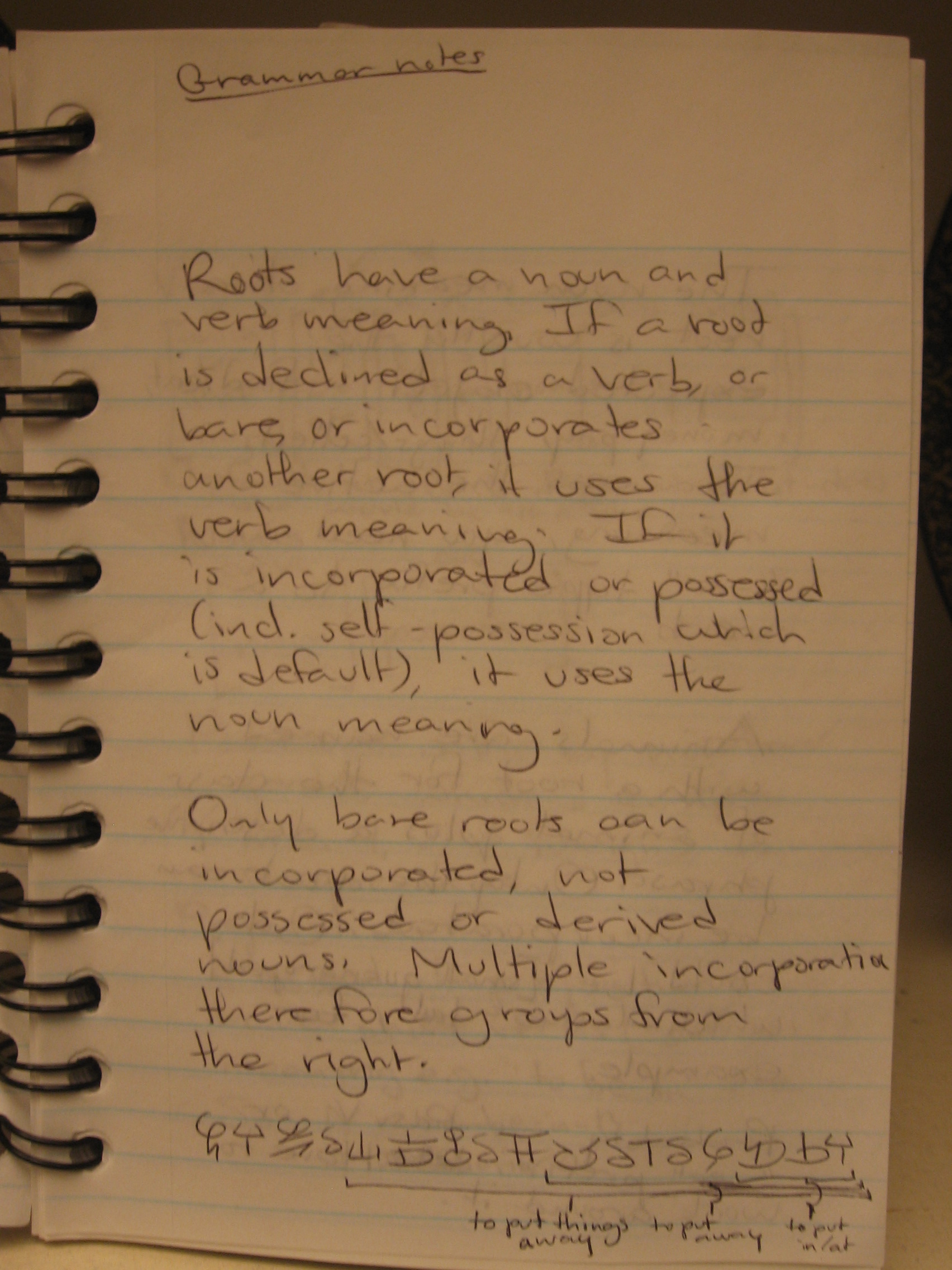
Another archaeological expedition into my boxed-up junk has turned up a conlang sketch which I think dates to sometime in 2002. First the photos and transcription:
As you can see in the photo below, no pronunciation was recorded for the alphabet. I remember doing this on purpose, so that I would not confuse the sounds of this language with the sounds of English; I wanted a romanization-free conlang. Unfortunately I do not remember how the consonant chart, which takes up the top half of the page, was organized.
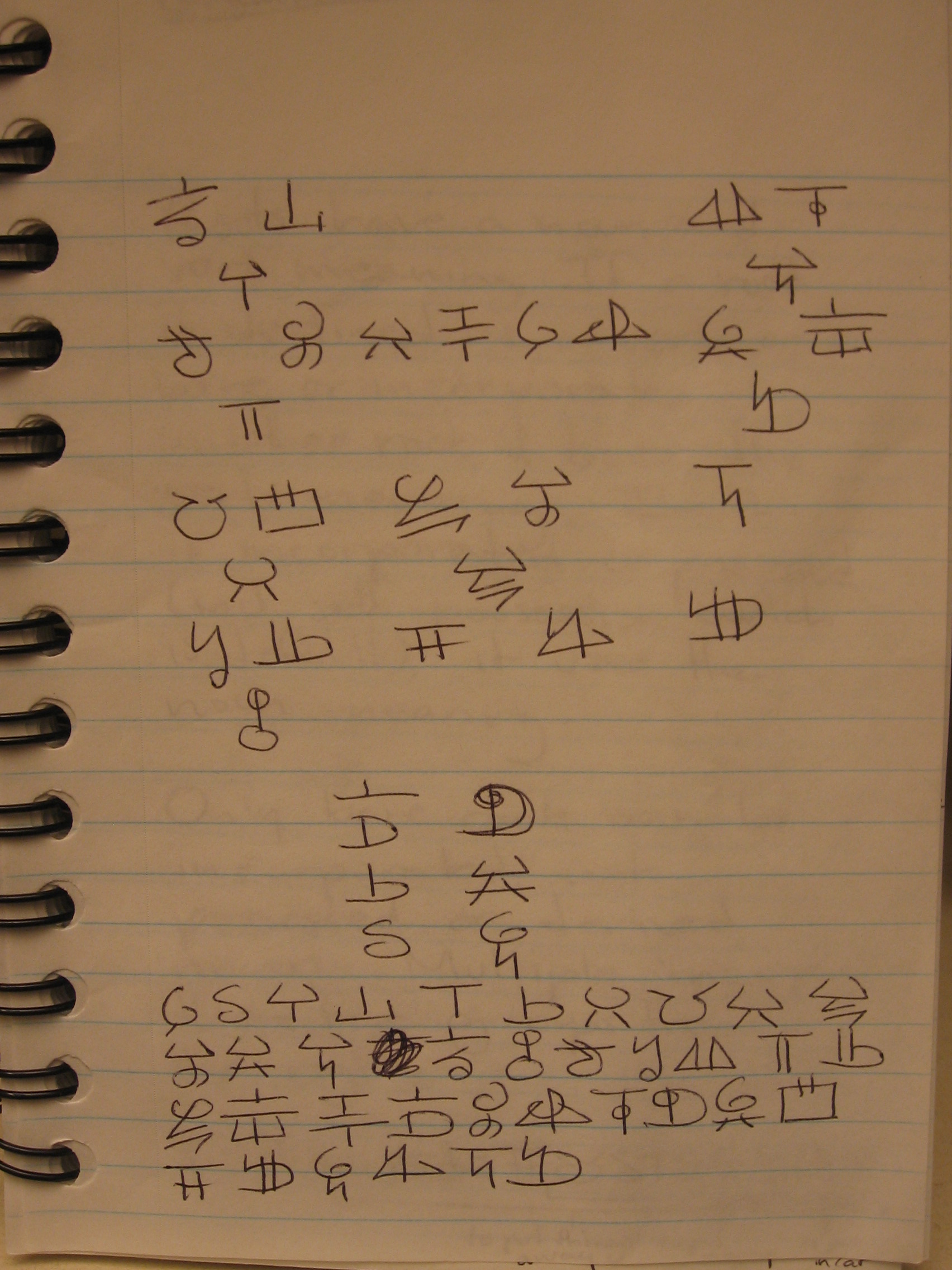
At the bottom of the page the alphabet is listed in its native compilation order, which I used to label each of 36 pages of my notebook for future use in entering dictionary items. Most of those pages did not get used.
Just above the alphabet, there are two columns of three glyphs each. These must be the vowels, i, e, and æ on the left, and u, o and ɒ on the right.
One consonant, with a glyph like a plain T, is listed in the ordered alphabet and has a dictionary page (with an entry!), but is not found in the consonant chart.
In grammar notes I wrote:
Roots have a noun and verb meaning. If a root is declined as a verb, or bare, or incorporates another root, it uses the verb meaning. If it is incorporated or possessed (incl. self-possession which is default), it uses the noun meaning.
Only bare roots can be incorporated, not possessed or derived nouns. Multiple incorporation therefore groups from the right.
Next I included the following sample utterance to illustrate grouping from the right:

The grammar continues with:
The noun meaning of a root is usually the expected object - food/eat, money/pay, things/collect. To access the active meaning, you need an "-er" type prefix to a verb.
Animals are named with a root for the class of animal plus a descriptive phrase. Only the root can be incorporated. Cat could be [small quadruped] which-lashes-tail, for example.
Probably no Pasv V or "-ee" prefix. Have to work around it.
Then I included the following charts showing the verb and noun templates:
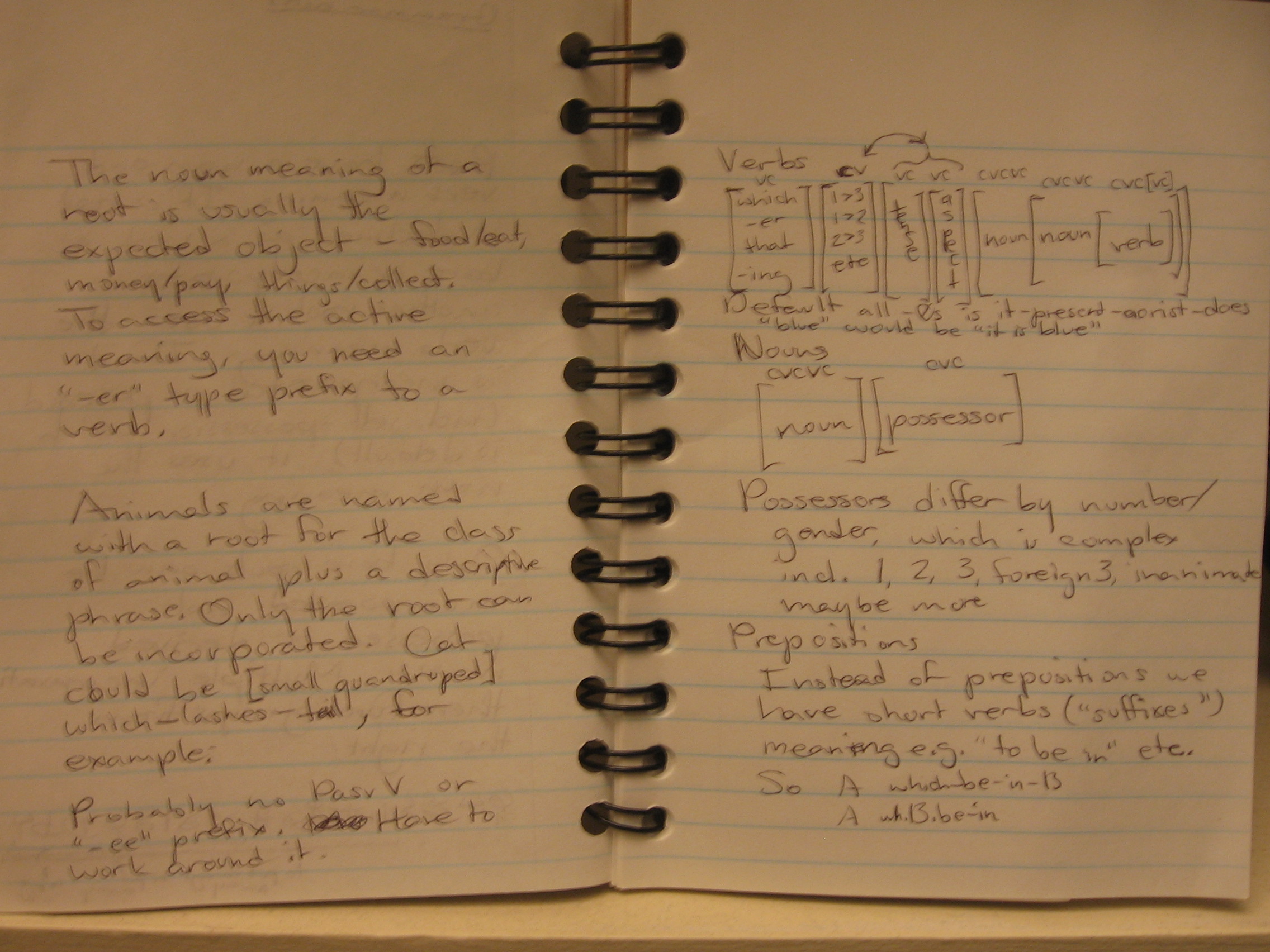
And I finished up with:
Possessors differ by number/gender, which is complex incl. 1, 2, 3, foreign3, inanimate, maybe more
Prepositions
Instead of prepositions we have short verbs ("suffixes") meaning e.g. "to be in" etc. So A which-be-in-B: A wh.B.be-in
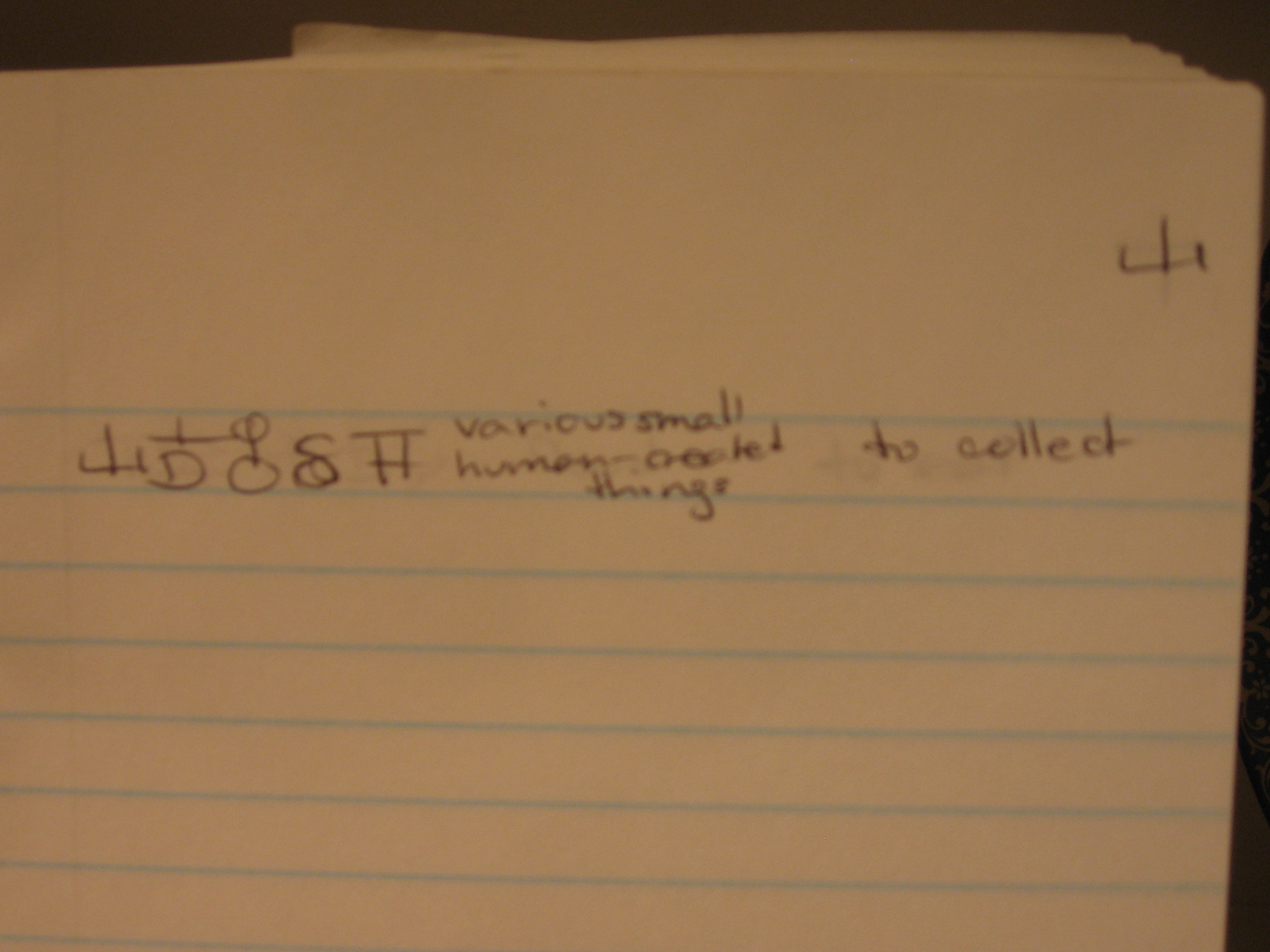
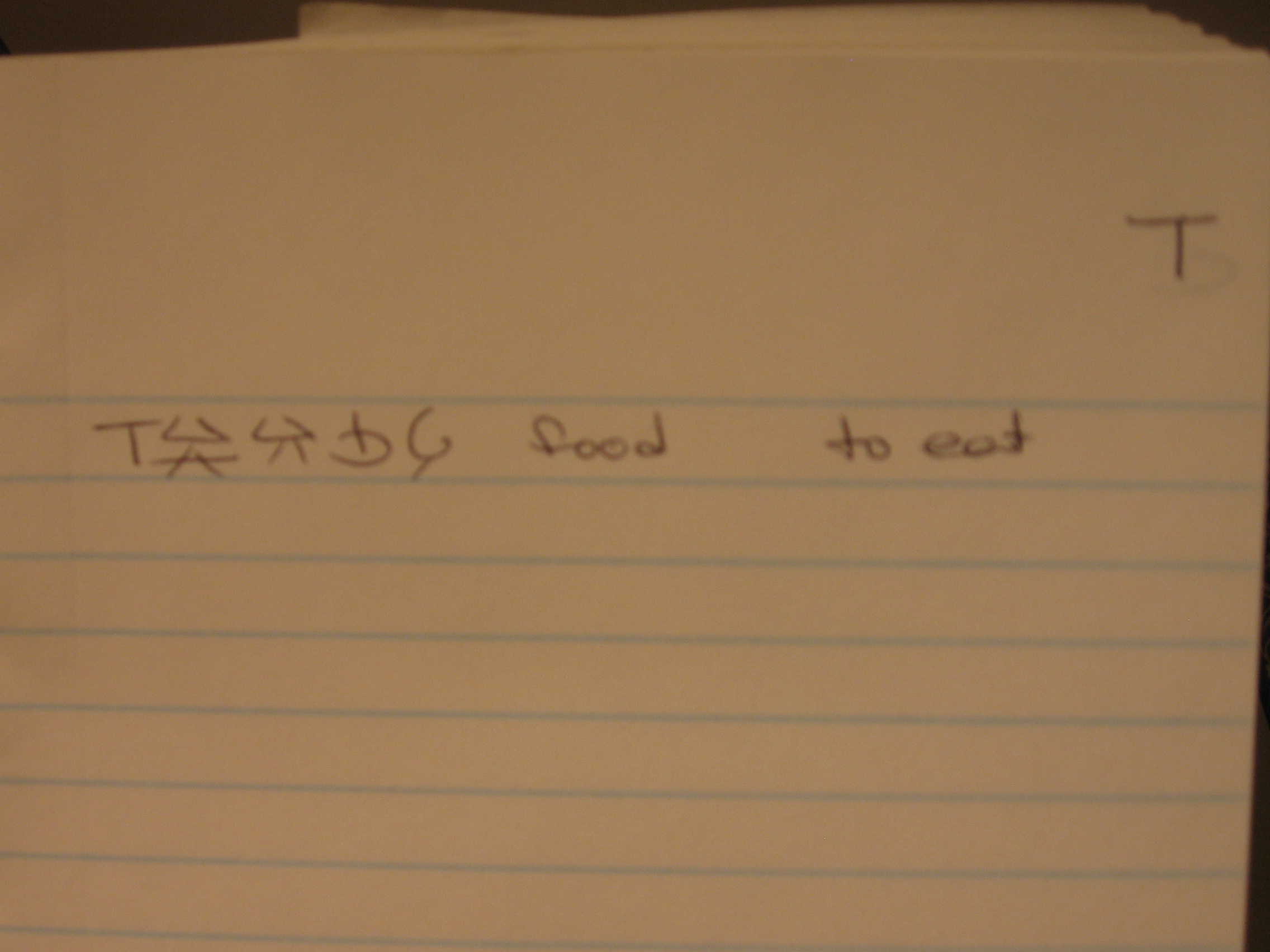
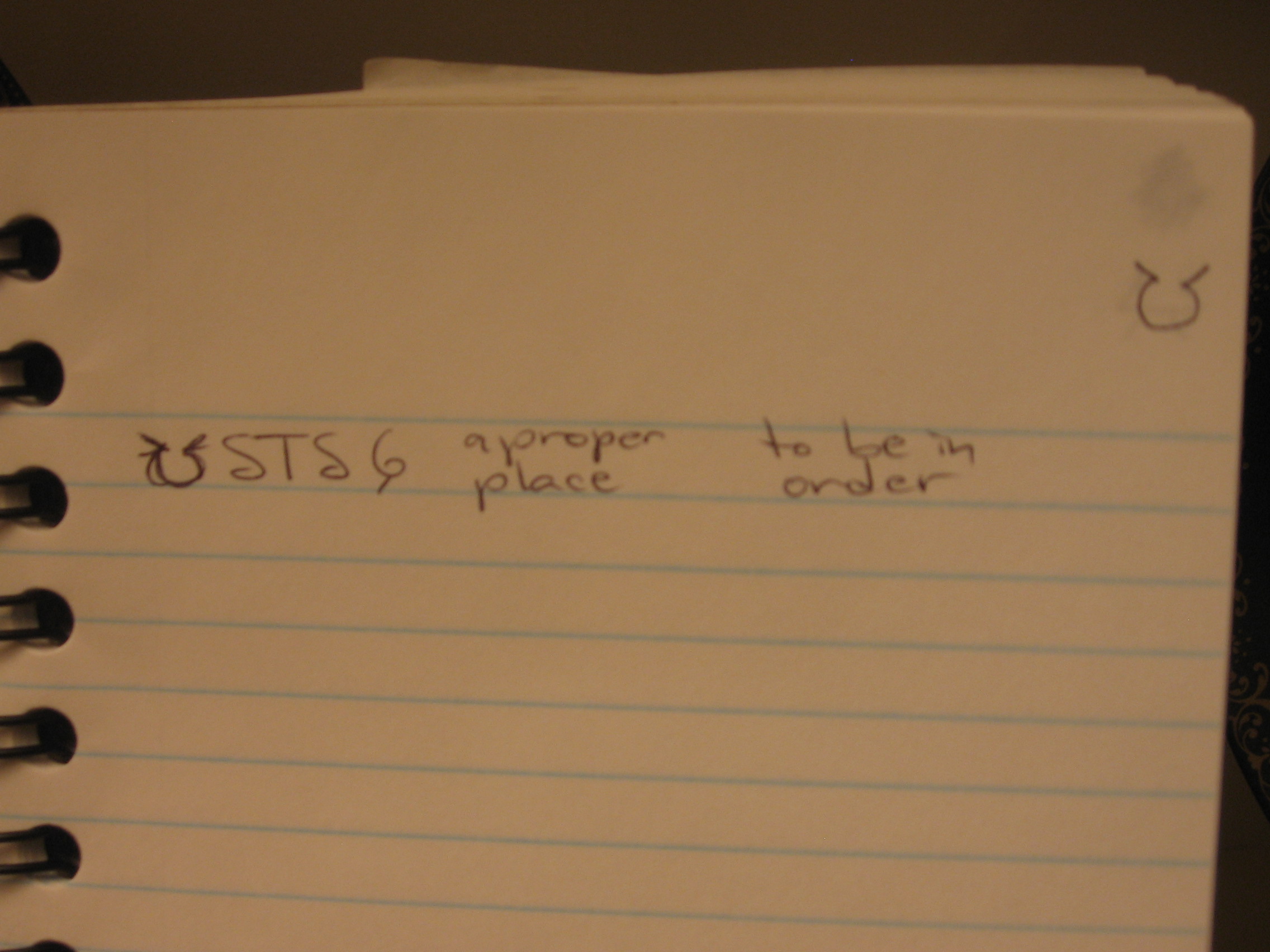
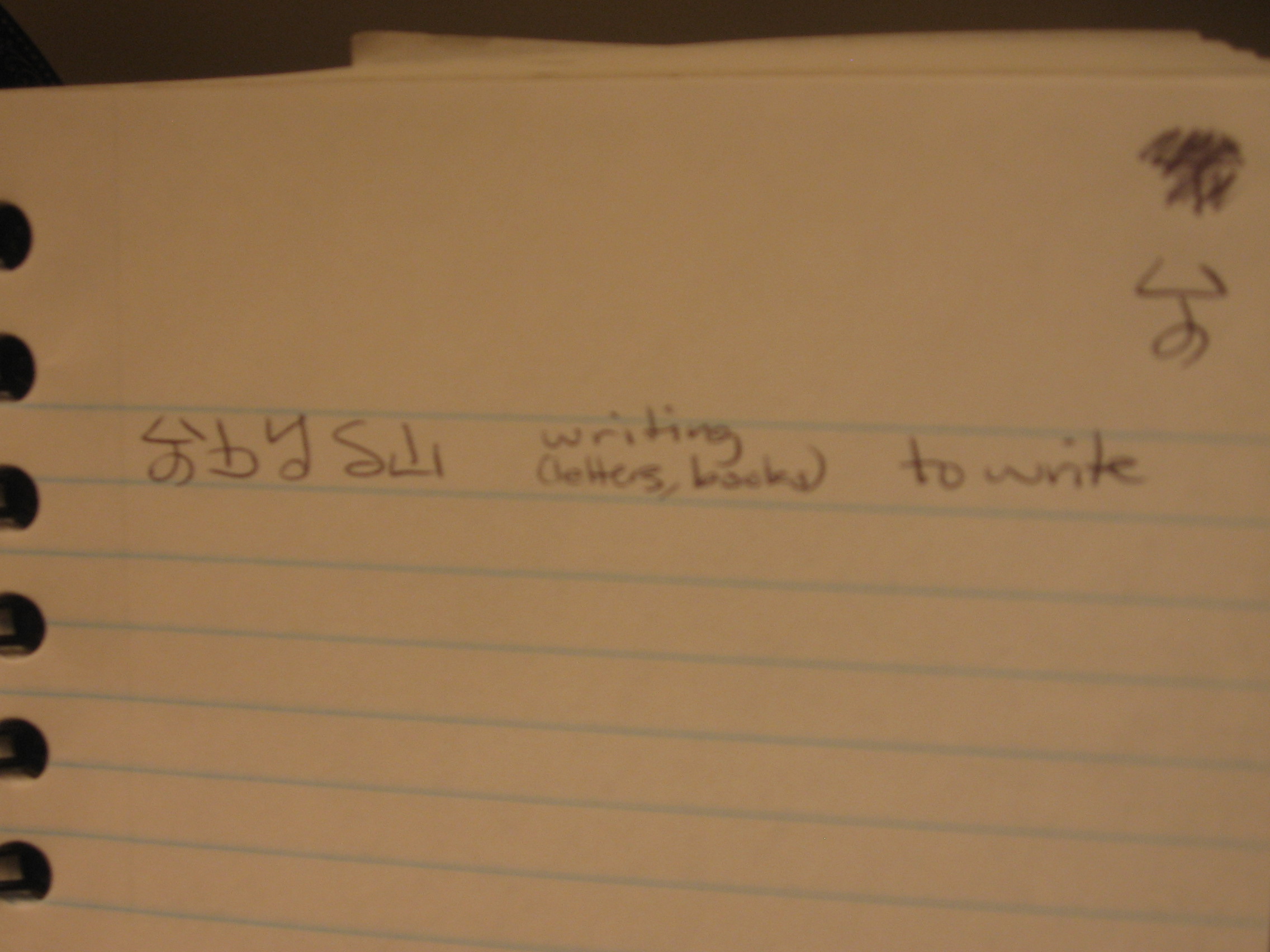

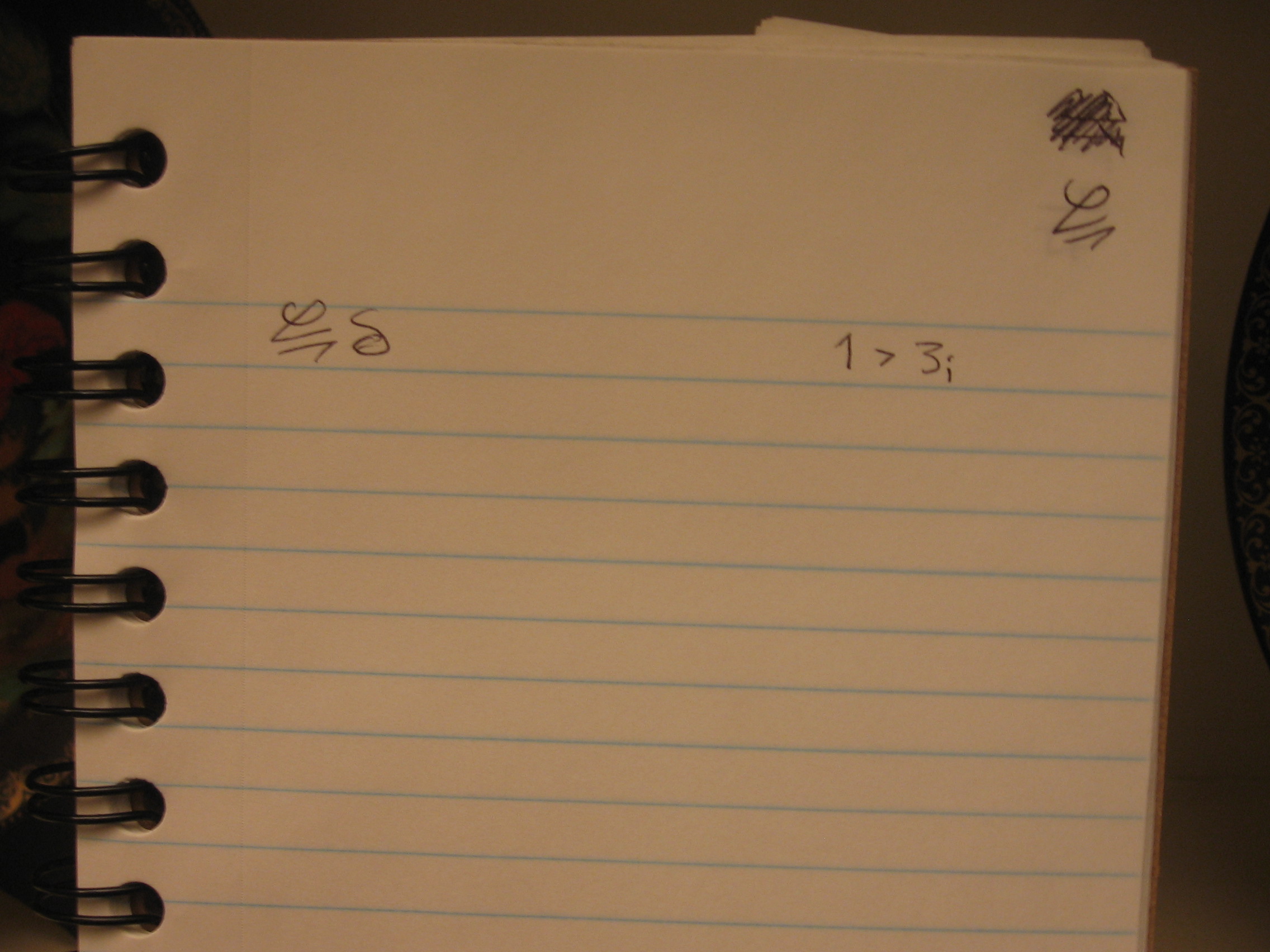
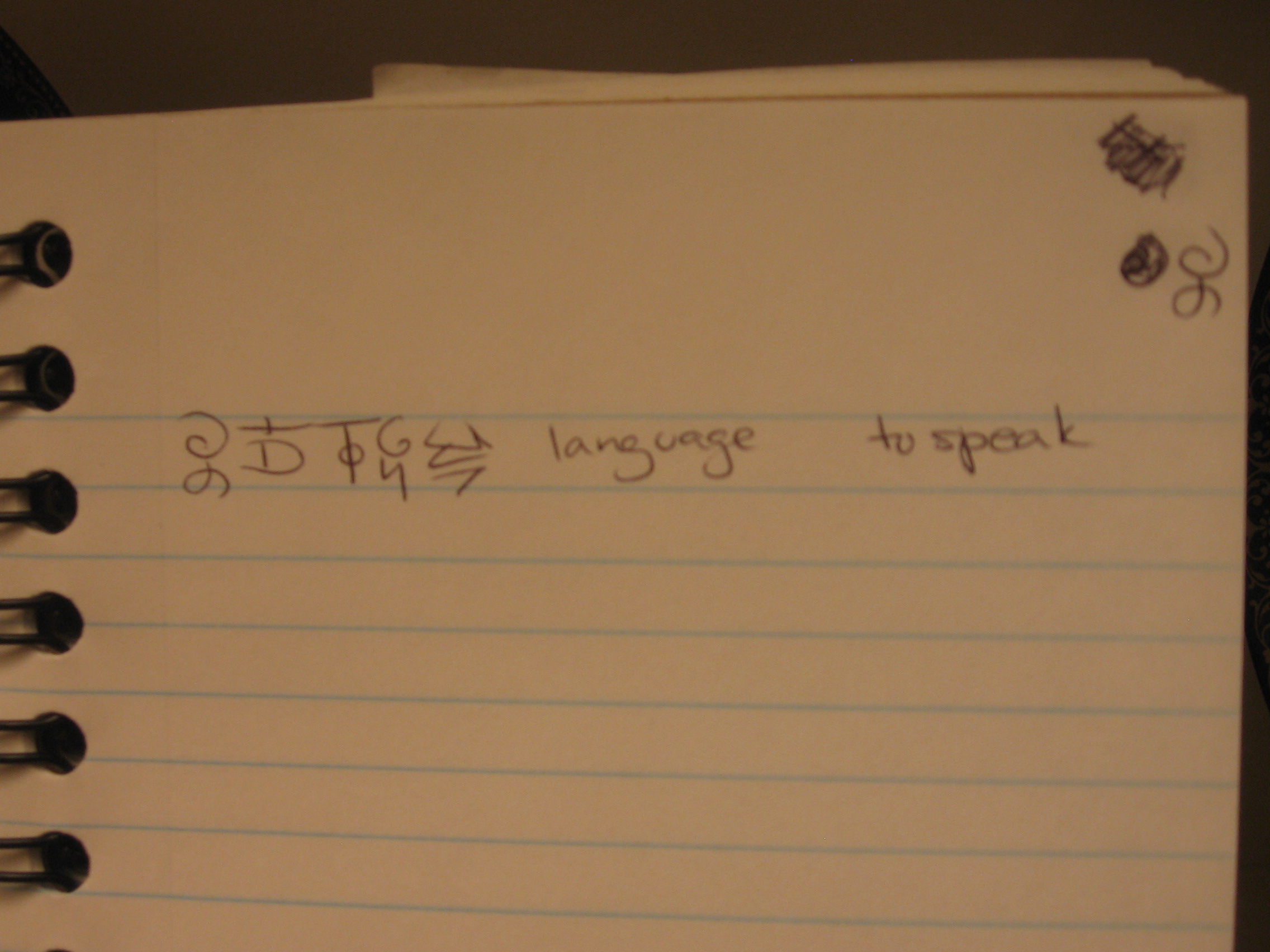
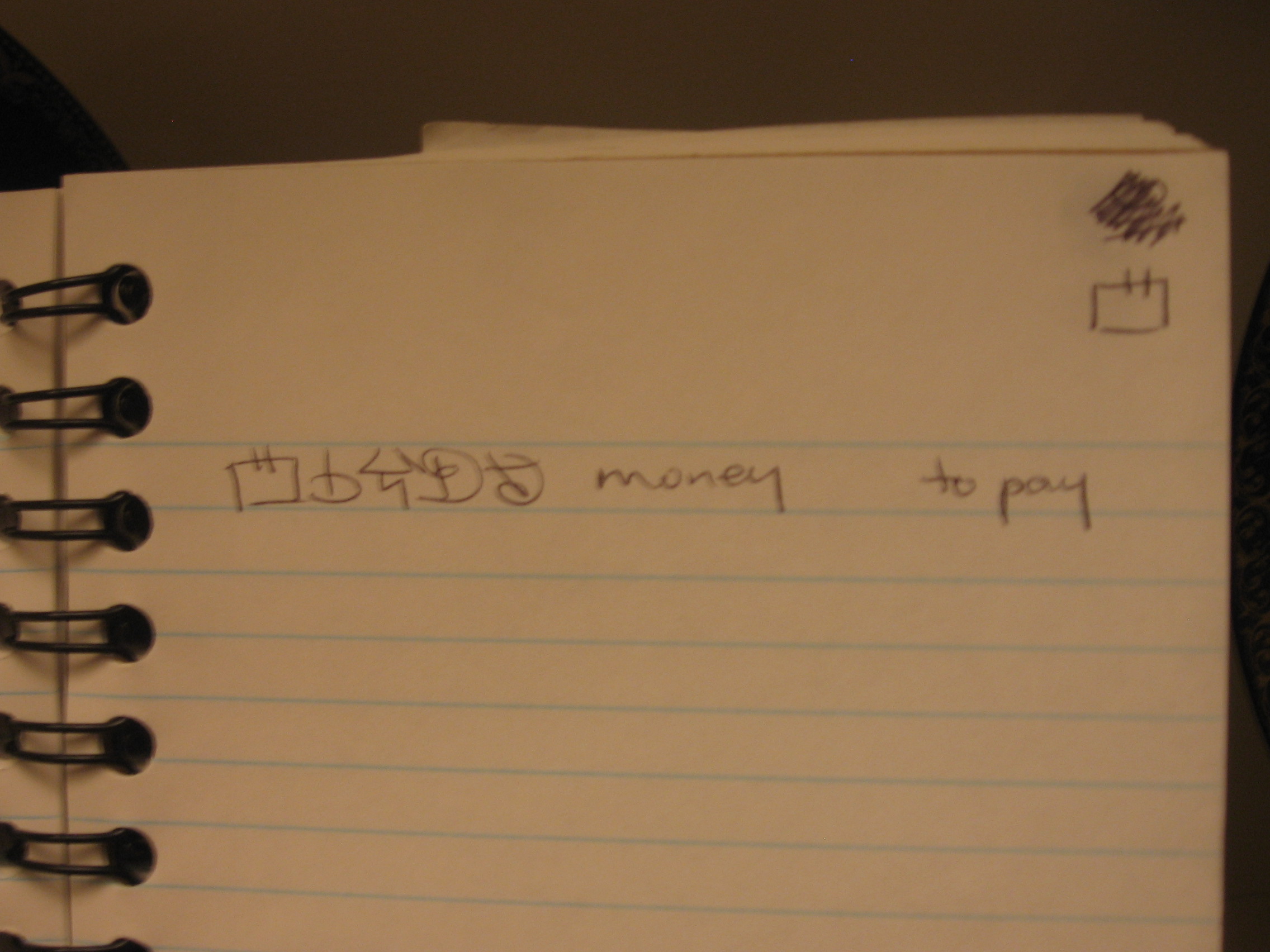
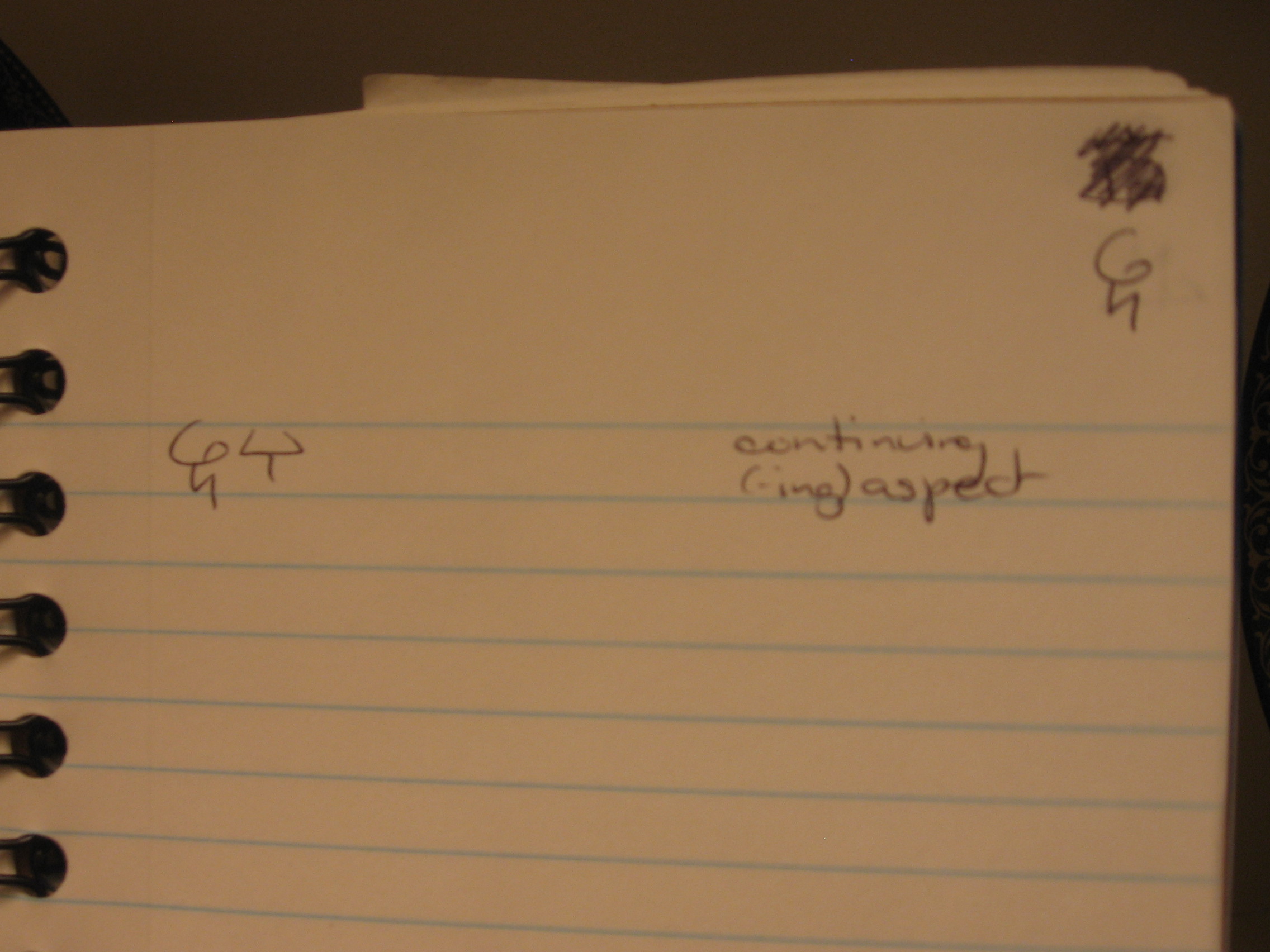
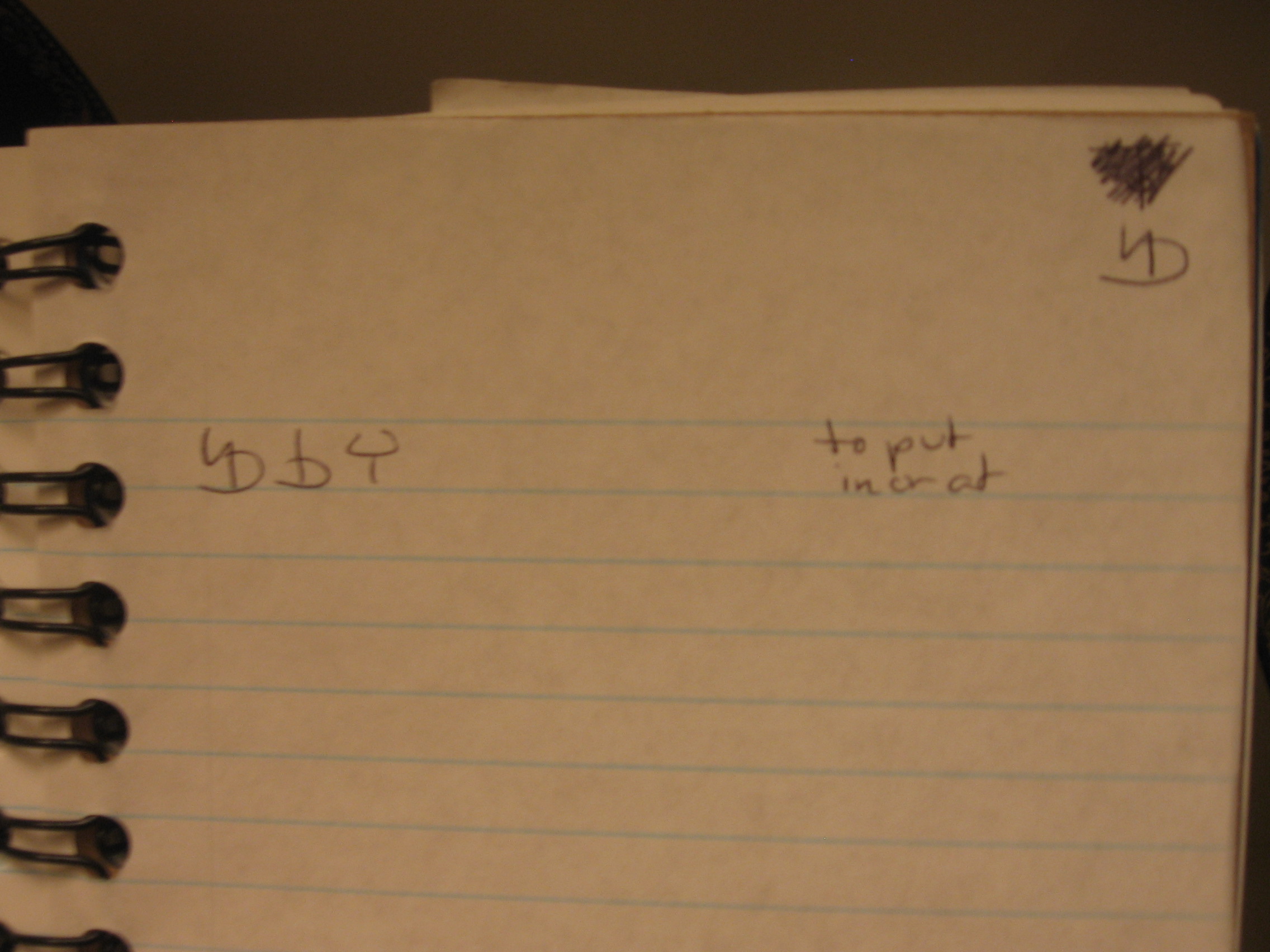
I remember making this conlang one afternoon or evening. I distinctly remember practicing palatal stops, so I believe it had them. I think it also had the uvular /q/. I do not know whether I was trying for as many places of articulation as I could think of, or perhaps having palatal and uvular stops without velars; the consonant chart would have to be interpreted quite differently in those two cases!
I do not believe it had pharyngeals, as I was unfamiliar with them when I began to study Arabic.
I think the groups of three in the chart are fundamental to its organization. I suspect they are either unvoiced stop, voiced stop, unvoiced fricative; or unvoiced stop, voiced stop, nasal. However, I could have been experimenting with aspiration or ejectives to get a tripartite distinction in stops.
I think the chart is most likely arranged with rows equal to places of articulation from front to back, but whether the rightmost column is part of the same rows as the leftmost and center colummns, or represents a continuation of the leftmost column, I do not know.
I remember that I was picking up and putting away things that evening, and that I was repeating the example utterance in the grammar (which does, in fact, mean "I am putting things away") over and over. If only I could remember how it sounded, I could crack the consonant chart code!
I do think that utterance had a palatal stop in it.
Last updated: 6/18/2011